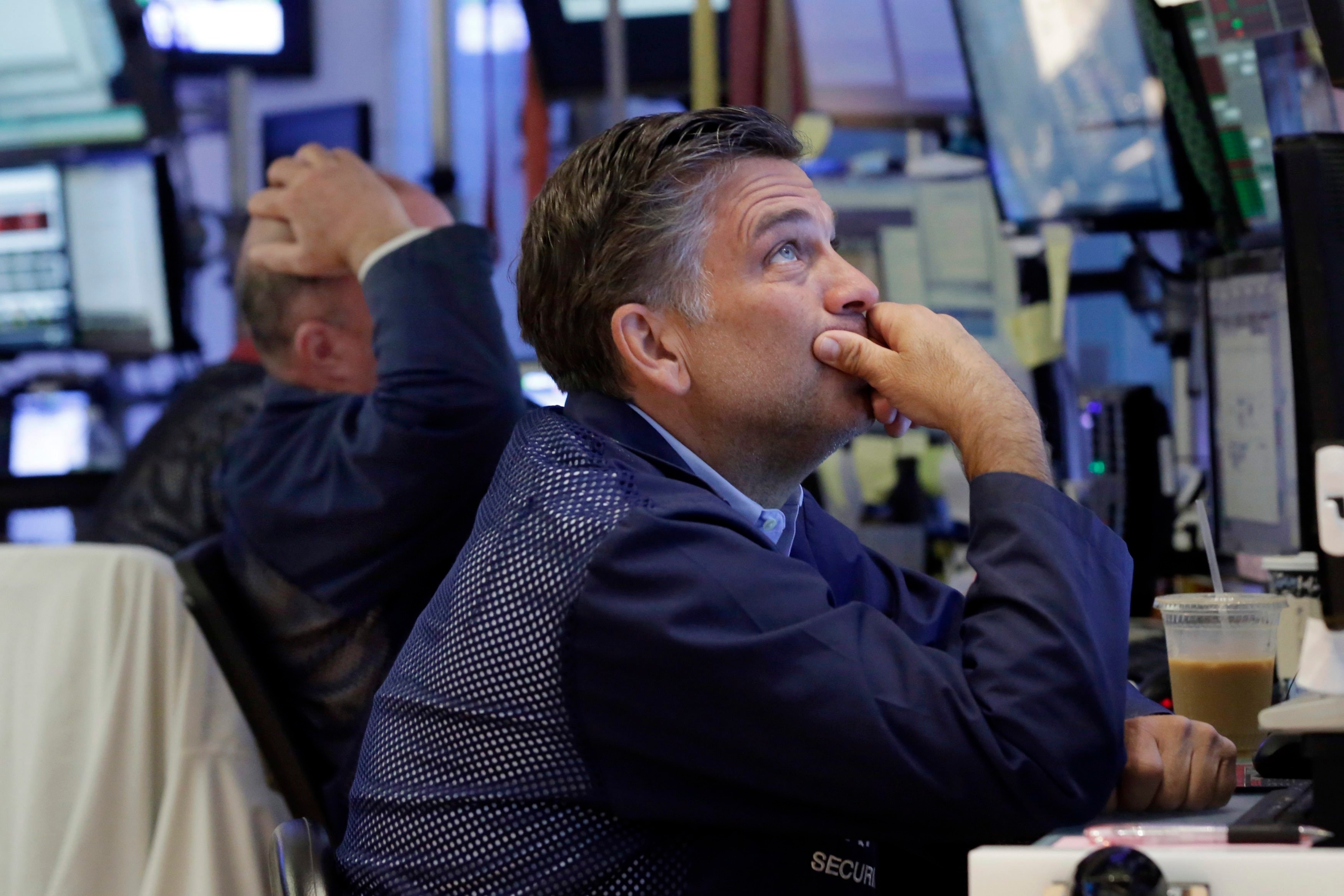Feb 5, 2018
Dow drops more than 1,100 points, giving up 2018 gains
Reuters

NEW YORK - U.S. stocks saw their biggest one-day fall in six years on Monday, as investor profit taking brought the market back down from record highs seen in late January, after benchmark bond yields rose to a four year high last week.
The Dow Jones Industrial Average fell nearly 1,600 points for its biggest intraday drop in history in points terms, or more than 6.0 per cent, before ending down 1,175.21 points, or 4.6 per cent for its biggest one-day fall since August 2011.
Only last month the Dow and benchmark S&P 500 index had their best monthly gains in two years, with stocks reaching record levels on Jan. 26, supported by the benefit of a cut in U.S. corporate taxes in December, rising earnings, and healthy global economic growth.
But with the Federal Reserve seen likely to raise short term interest rates another three or four times in 2018, bond yields have been rising, and last Friday's healthy U.S. labor market report sparked fears of rising inflation, leading to Monday's sharp bout of profit taking.
"The market is looking for a new sustainable valuation level for both stocks and bonds, and that to me is the underlying catalyst," said Jim Paulsen, chief investment strategist at Leuthold Grup in Minneapolis.
The CBoe Volatility index closed at its highest since August 2015.
WEIGH IN

What’s your portfolio strategy during this round of market turmoil?
Selling hit all S&P sectors, though the S&P financial index, down 5.0 per cent, was the biggest daily per centage decliner, followed by healthcare, down 4.6 per cent.
"It looks to me like a typical type of scenario when you see a single stock flash crash where you'll see bids just disappear, stop orders get kicked," said Joe Saluzzi, co-manager of trading at Themis Trading in Chatham, New Jersey. "The overall market could have taken a cue from some of the bigger names."
The Dow Jones Industrial Average fell 1,175.21 points, or 4.6 per cent, to 24,345.75, the S&P 500 lost 113.19 points, or 4.10 per cent, to 2,648.94 and the Nasdaq Composite dropped 273.42 points, or 3.78 per cent, to 6,967.53.
The pan-European FTSEurofirst 300 index lost 1.51 per cent and MSCI's gauge of stocks across the globe shed 2.96 per cent.
After rising sharply last week, U.S. Treasury yields fell from four-year highs on Monday as the selloff in equity markets sparked demand for low risk debt.
Benchmark U.S. 10-year note yields surged to 2.885 per cent overnight, the highest since January 2014, following data Friday that showed hourly wages rose in January.
The 10-year notes last rose 38/32 in price to yield 2.7093 per cent, down from 2.852 per cent late on Friday.
The U.S. dollar rose against a basket of currencies as the U.S. bond market selloff leveled off.
The dollar index rose 0.49 per cent, with the euro last up 0.06 per cent to $1.2375.
Oil prices settled lower, pressured by rising U.S. output and other factors.
U.S. crude fell 1.99 per cent to $64.15 a barrel, while Brent fell 1.4 per cent to $67.62.
Spot gold steadied at $1,334.40 an ounce.
CANADIAN MARKETS
Canada's main stock index slumped to a four-month low on Friday, with natural resource shares leading broad based declines as commodity prices dropped and higher bond yields pressured global equity markets.
U.S. crude prices were down 1.1 per cent at US$65.09 a barrel, while Brent crude lost 2 per cent to US$68.27.
The energy group retreated 2.5 per cent. Suncor Energy slipped 1.8 per cent to $43.81, and Canadian Natural Resources Ltd dropped 1.4 per cent to $41.88.
The financials group slipped 1.2 per cent. Bank of Nova Scotia (BNS.TO) gave back 0.9 per cent to $80.01, and Canadian Imperial Bank of Commerce (CM.TO) lost 1.7 per cent to $119.
The materials group, which includes precious and base metals miners and fertilizer companies, lost 2.8 per cent. Barrick Gold Corp (ABX.TO) slipped 3.7 per cent to $17.04, and Goldcorp Inc (G.TO) fell 2.9 per cent to $17.02. Gold futures fell 1.3 per cent to US$1,331.34 an ounce. Copper prices declined 0.6 per cent to $7,079 a tonne.
The Toronto Stock Exchange's S&P/TSX composite index closed down 254.89 points, or 1.61 per cent, at 15,606.03, its biggest drop since May. All of the index's 10 main groups were in negative territory.







